Services
Your home to wellness
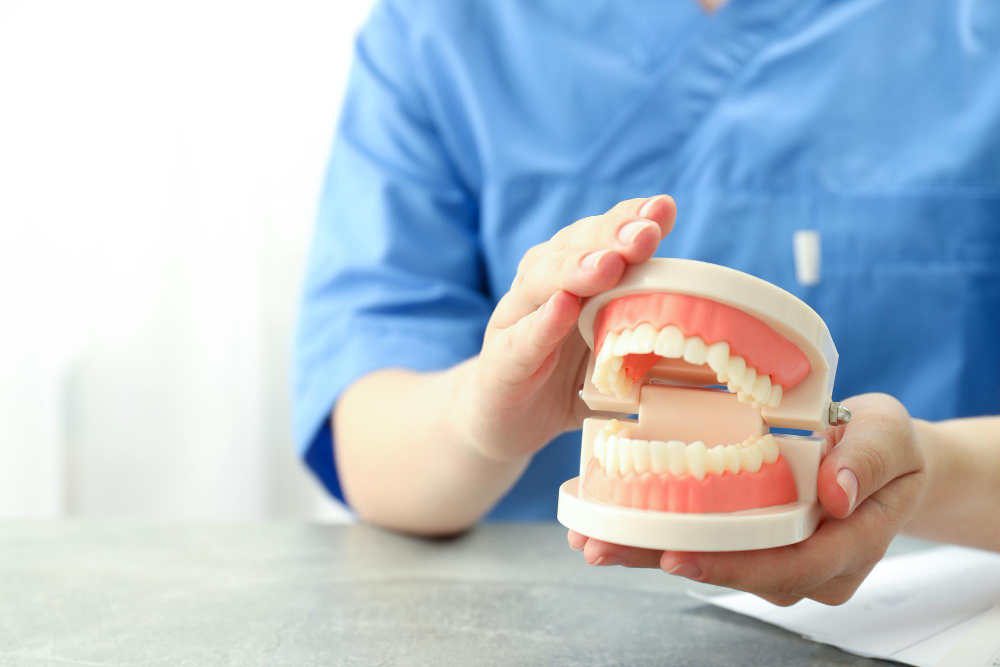
Dentures
Dentures are removable prosthetic devices designed to replace missing teeth and restore your smile’s function and appearance. Crafted from durable materials, dentures offer improved chewing ability and speech clarity. Custom-fitted for comfort, they provide a natural-looking solution for patients seeking to regain confidence in their smile and oral function.
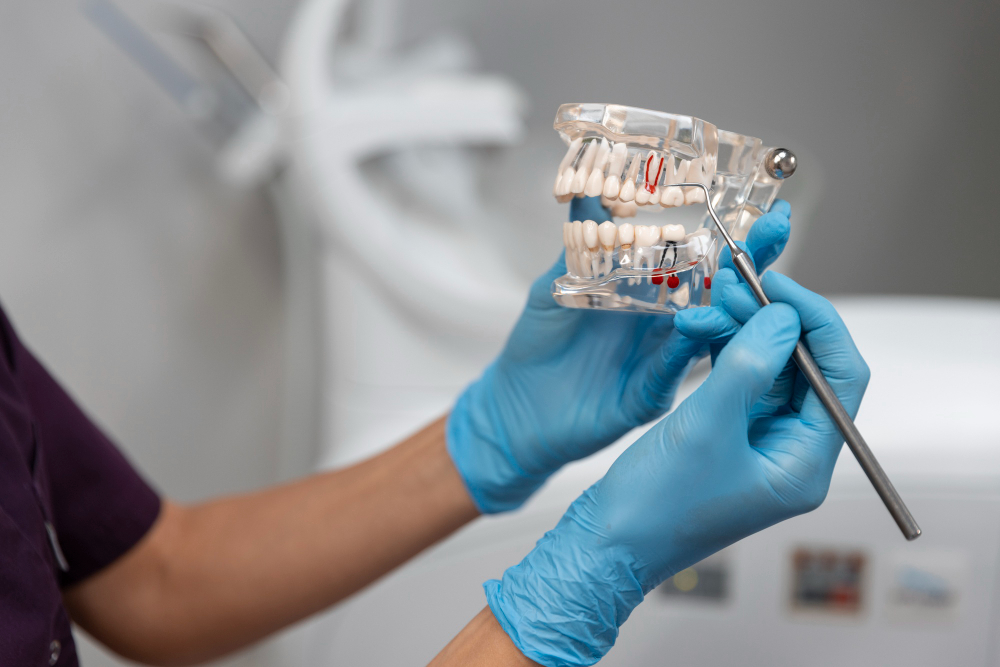
Dental Bridges
Bridges and partial dentures are dental prosthetics used to replace missing teeth. Bridges are fixed appliances that anchor to adjacent teeth, while partial dentures are removable and clasp onto existing teeth. Both restore function and aesthetics, ensuring a confident smile and improved oral health.
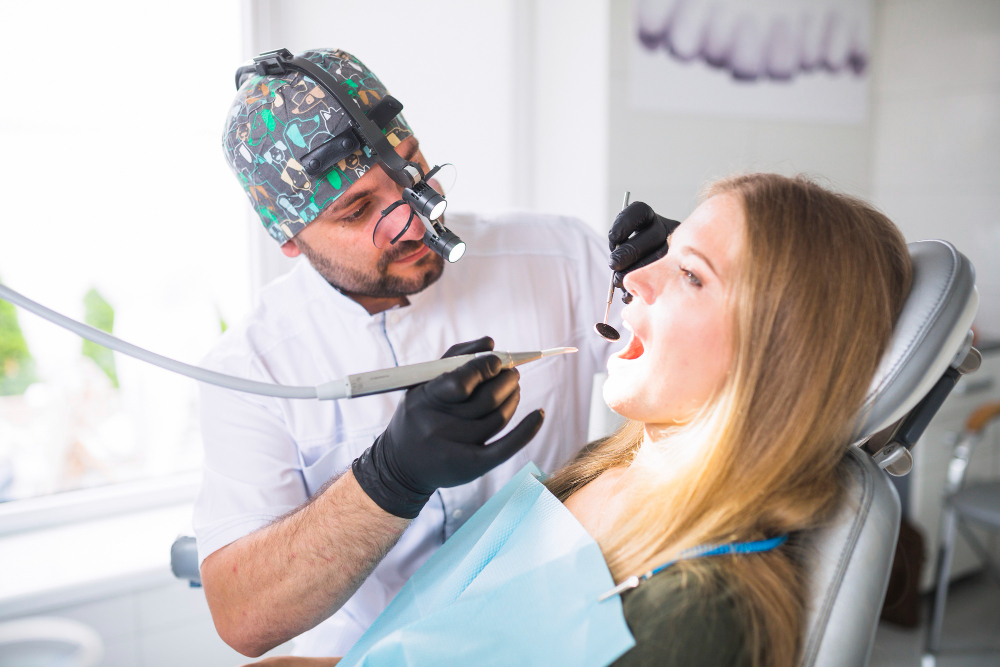
Dental Cosmetic
Cosmetic treatment encompasses a range of procedures aimed at enhancing the appearance of teeth and smiles. From teeth whitening and veneers to orthodontic options like braces or clear aligners, cosmetic treatments address imperfections and create a more confident, radiant smile. Tailored to individual preferences, these procedures offer a boost in self-esteem and oral aesthetics.

Cracked Teeth
Cracked teeth, a dental nightmare, often result from trauma, grinding, or biting hard objects. Symptoms include pain while chewing, sensitivity to temperature, and swollen gums. Treatment varies from bonding and crowns for minor cracks to root canals for severe cases. Prevention involves wearing mouthguards during sports and avoiding chewing ice or hard candies. Regular dental check-ups are crucial for early detection.
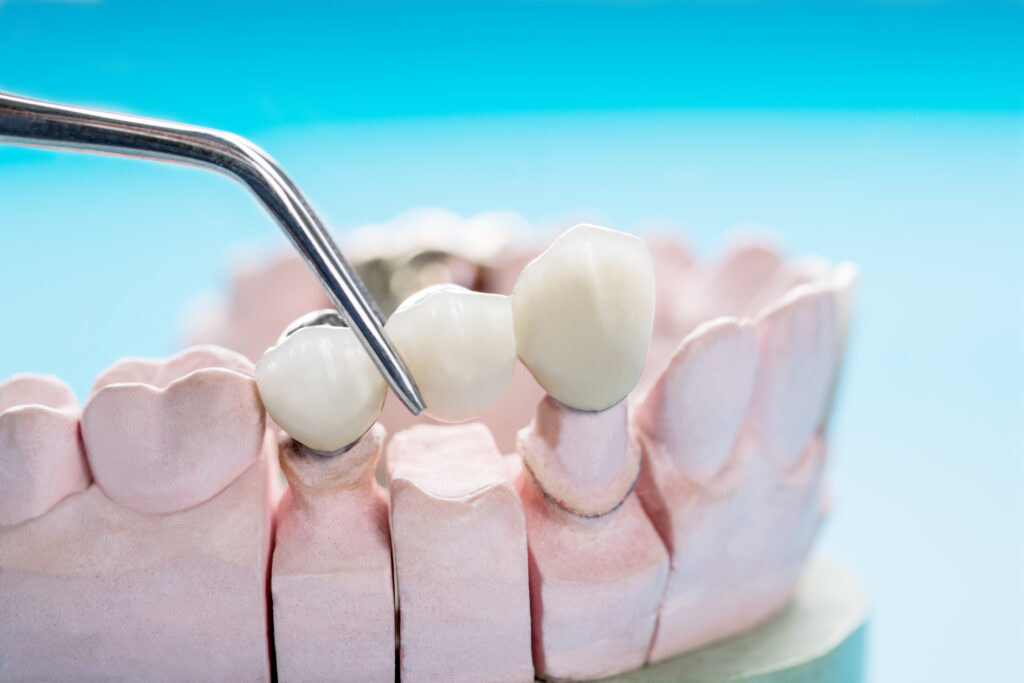
Dental Crowns
Dental crowns are caps placed over damaged or decayed teeth to restore their shape, size, strength, and appearance. After preparing the tooth, the dentist takes impressions to create a custom crown. The crown is then cemented onto the tooth, covering it entirely above the gum line. Crowns can be made from various materials, including porcelain, metal, or a combination.
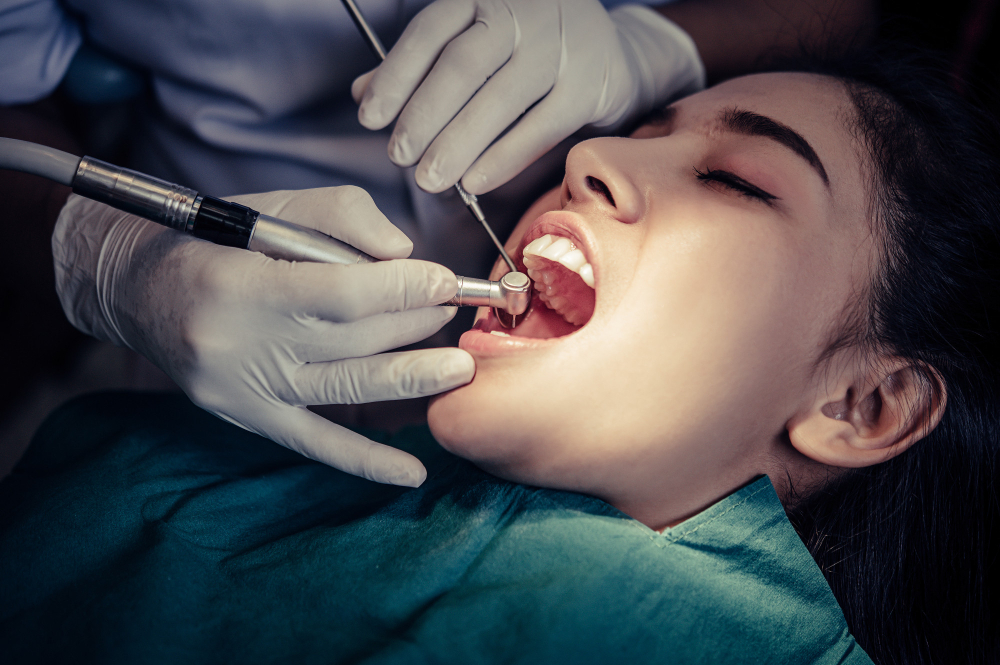
Fillings
A dental filling is a common treatment for cavities or tooth damage. After numbing the area with local anesthesia, the dentist removes decay and fills the space with materials like amalgam or composite resin. The filling is shaped to match the tooth’s contours and polished for a natural look. Good oral hygiene and regular check-ups help maintain the filling’s integrity.

Dental Implants
Dental implants are titanium posts surgically placed into the jawbone to replace missing teeth. Over time, the bone fuses with the implant, providing a stable foundation for a crown, bridge, or denture. Implants look and function like natural teeth, restoring chewing ability and preventing bone loss. They offer a long-term solution for tooth replacement with proper care and maintenance.

Orthodontic Treatments
Orthodontic treatments aim to correct misaligned teeth and jaws for improved dental health and aesthetics. Traditional braces use metal brackets and wires to gradually move teeth into alignment. Clear aligners, like Invisalign, are removable trays that exert gentle pressure to shift teeth. Orthodontic treatment can address issues such as overbites, underbites, crowding, and spacing, promoting proper bite function and enhancing smile aesthetics.
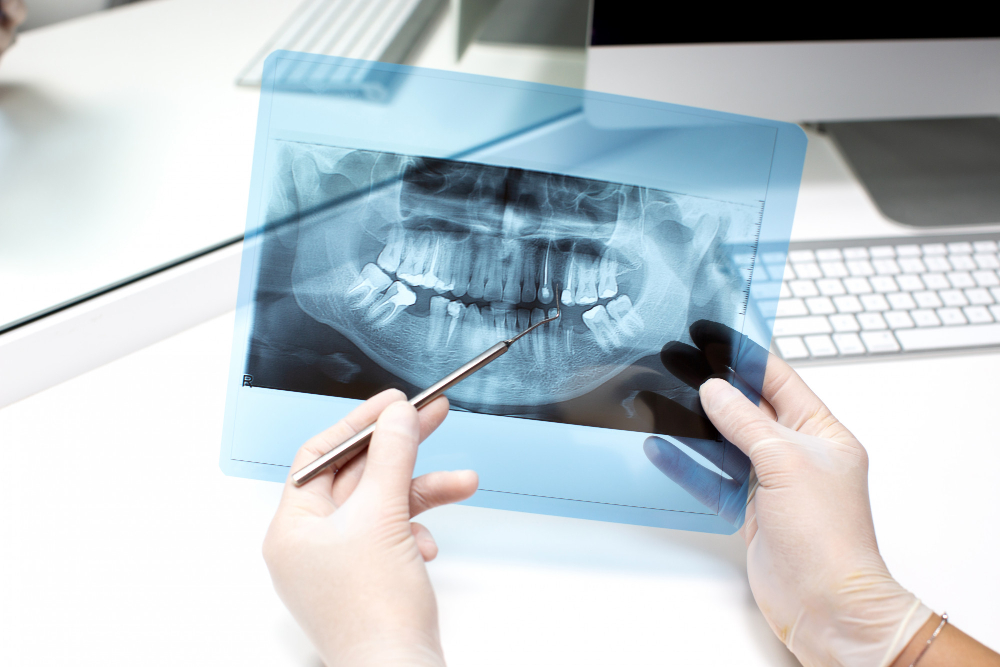
X- Rays
Dental X-rays are diagnostic images used to assess oral health by revealing hidden issues like cavities, infections, and bone loss. Digital X-rays emit minimal radiation, ensuring patient safety. Intraoral X-rays capture detailed images inside the mouth, while extraoral X-rays show broader views of the jaw and skull. Dentists use these images to plan treatments and monitor oral conditions effectively.

Tooth Extractions
Tooth extractions involve the removal of a tooth from its socket in the jawbone. Common reasons for extraction include severe decay, gum disease, overcrowding, or trauma. Before the procedure, the area is numbed with local anesthesia to minimize discomfort. Simple extractions involve loosening the tooth with forceps, while surgical extractions may require incisions and bone removal. Proper aftercare helps promote healing and prevent complications.

Pediatric Dentistry
Pediatric dentistry focuses on the oral health of children from infancy through adolescence. Pediatric dentists specialize in providing preventive care, diagnosing and treating dental issues unique to children, and promoting good oral hygiene habits. They offer services like dental exams, cleanings, fluoride treatments, and cavity prevention. Creating positive experiences in a child-friendly environment helps establish a lifetime of good oral health habits.
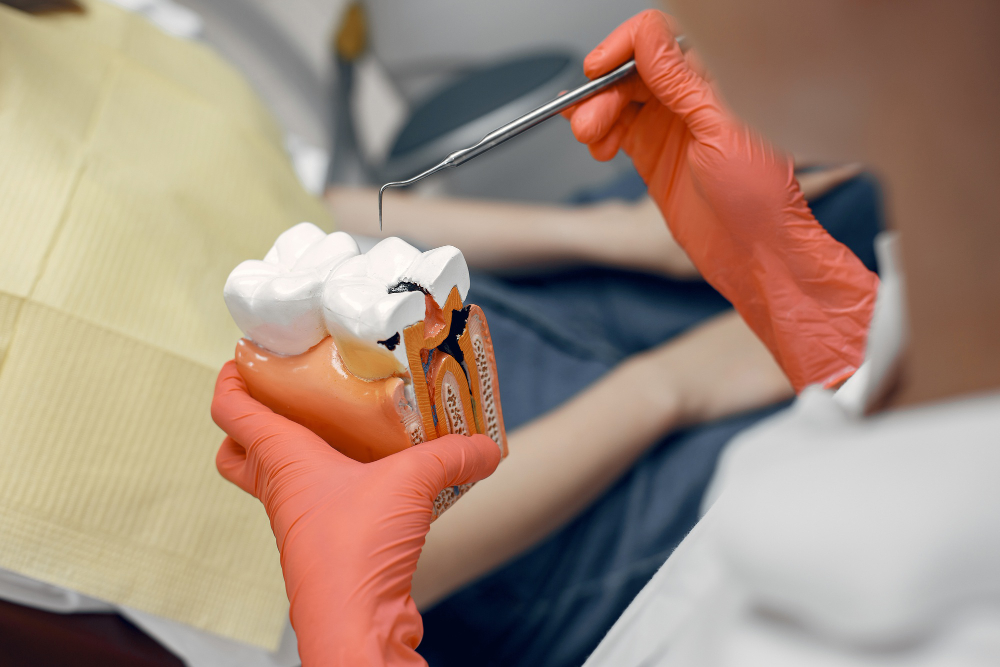
Root Canal Treatment
Root canal treatment is a procedure to save a severely decayed or infected tooth by removing its pulp, containing nerves and blood vessels. After numbing the area, the dentist accesses the pulp chamber, cleans and disinfects it, then fills and seals it with a rubber-like material. This prevents reinfection and restores tooth function. Root canals alleviate pain and preserve the natural tooth, avoiding extraction.

Veneers
Veneers are thin, custom-made shells of tooth-colored material, typically porcelain, bonded to the front surface of teeth to improve their appearance. They can correct various issues like discoloration, chips, cracks, or gaps, providing a natural-looking and durable solution. Minimal tooth preparation is needed before bonding veneers, making them a popular choice for enhancing smiles with long-lasting results.
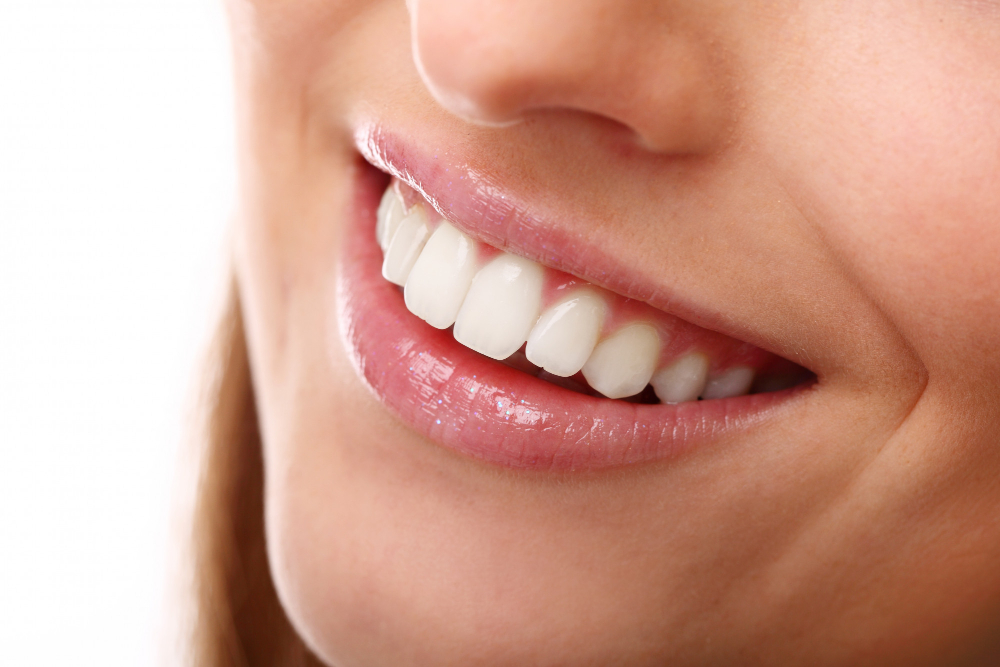
Teeth Whitening
Teeth whitening is a cosmetic dental procedure that lightens and removes stains and discoloration from teeth. It involves the application of bleaching agents, such as hydrogen peroxide or carbamide peroxide, which penetrate the enamel to break down stains. Professional whitening treatments administered by dentists typically yield faster and more effective results than over-the-counter options, providing a brighter and more confident smile.

Wisdom Teeth
Wisdom teeth, also known as third molars, are the last set of molars to emerge in the back corners of the mouth. They usually appear in late adolescence or early adulthood. Due to limited space or improper alignment, wisdom teeth can become impacted, causing pain, infection, or damage to adjacent teeth. Extraction may be necessary to alleviate discomfort and prevent complications.